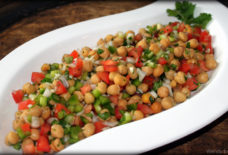Sugar Hooked Us On Yogurt. Could Savory Be The New Sweet? - capradio.org
Back in the 1940s, turning Americans onto the tangy taste of yogurt wasn’t an easy sell.
It seems many of our grandparents turned their noses up at the idea of sour, fermented milk.
“The tart taste was totally unfamiliar to Americans, and that was really the biggest hurdle,” says Michael Neuwirth, a spokesman for the Dannon Co.
When Daniel Carasso, the son of the company’s founder, immigrated to New York, he found Americans’ sweet tooth ran strong. So Carasso and his partners decided to try something new. Why not add sugary, fruit puree to the bottom of each cup?
“It sweetened the taste and made it more palatable to Americans,” Neuwirth says. And within a few years, the business was thriving.
Our cultural preference for sweet hasn’t waned much, Neuwirth says. “The vast majority of yogurt we make — and that Americans buy — is sweetened and flavored.”
We’ve all seen it: The present-day yogurt aisle is part dessert menu (like this coconut cream pie-flavored yogurt), part cocktail list (Yoplait Piña Colada yogurt). There’s even candy yogurts with bits of jelly beans and chocolates, such as M&Ms.
But some yogurtmakers say it’s time to dial back on the sugar — and the artificial sweeteners, too.
John Fout, co-founder of Sohha Savory Yogurt, says that around the globe, the natural tartness of yogurt is embraced.
“In most places where the yogurt culture started out — [the] Middle East, India — where yogurt has its longest routes, everybody eats yogurt savory,” Fout says. (My colleague Maria Godoy will explore the astonishing variety of ways the world cooks with and eats yogurt in a story later Friday.)
Fout gave up his career as a Wall Street trader to start a yogurt company with his Lebanese-born wife.
“The thing we’re trying to do by putting savory in our name — and saying it doesn’t have to be sweet — is to get people eating yogurt in other ways,” he says.
He says that when his wife first introduced him to the traditional Lebanese-style yogurt, made with just milk, cultures and sea salt, it was a revelation.
“I mean, when I was a kid, if you’d told me I was going to eat plain yogurt, I would have told you, ‘You’re nuts!’ ” Fout says.
But when he fell in love with his wife, he says, he also fell for the yogurt she introduced him to.
“It’s delicious,” Fout says.
Sohha Savory Yogurt is sold at grocery stores in the Northeast, and it also has a yogurt stand at Chelsea Market in New York City, where the company sells yogurts topped off with olive oil infused with the company’s own spice blends.
One blend is made with classic Middle Eastern spices, za’atar and sumac, “so you get the bright citrusy flavor of sumac that matches with the tanginess of the yogurt,” explains Fout. “It’s delicious to eat with crudites or some pita chips.”
Another combination pairs the cooling tang of yogurt with the heat of peppers. He’s keen on jalapeño or habanero. “Finishing sea salts are nice, too,” Fout says.
And he says customers are warming up to the novelty of what he’s selling.
“I’ll try anything once,” Gene DePiro tells us, as she wanders by the Sohha yogurt stand. She and friend Bridget Mullins decide to give it a try.
DePiro takes a sample of plain yogurt and makes a quick declaration: “Not my style of yogurt.” She’ll stick with flavored, sweet yogurts, thank you.
But the taste wins Mullins over. “It’s so good. It’s really smooth,” she gushes. “And it’s got a luscious consistency.”
This makes her look at yogurt in a new way. “I always think of yogurt as a breakfast food,” Mullins says. But now, she’s got a new idea for lunch.
And she just may be onto the latest trend. According to a report from market-research firm Mintel, “While the majority of leading yogurt flavors are sweet, the spread of savory offerings … may portend the next shift in the category.”
Mintel analyst Beth Bloom tells us that international influences are definitely being seen in new yogurt product launches.
“We’re seeing yogurt with cucumber, which could be compared to tzatziki,” and there are new yogurt-based dips inspired by Indian-style raita.
It’s still a small part of the market, but it’s growing.
“In the past year, there has been a pretty big jump in yogurt products claiming to be lower sugar,” or reduced or no-sugar, explains Bloom.
Nine percent of new yogurt products made such claims this year, compared to just 4 percent the year before. Which means that sweet won’t go away any time soon.
Sugar sells. But savory seems to have its foot in the refrigerator door.
Source: www.capradio.org


